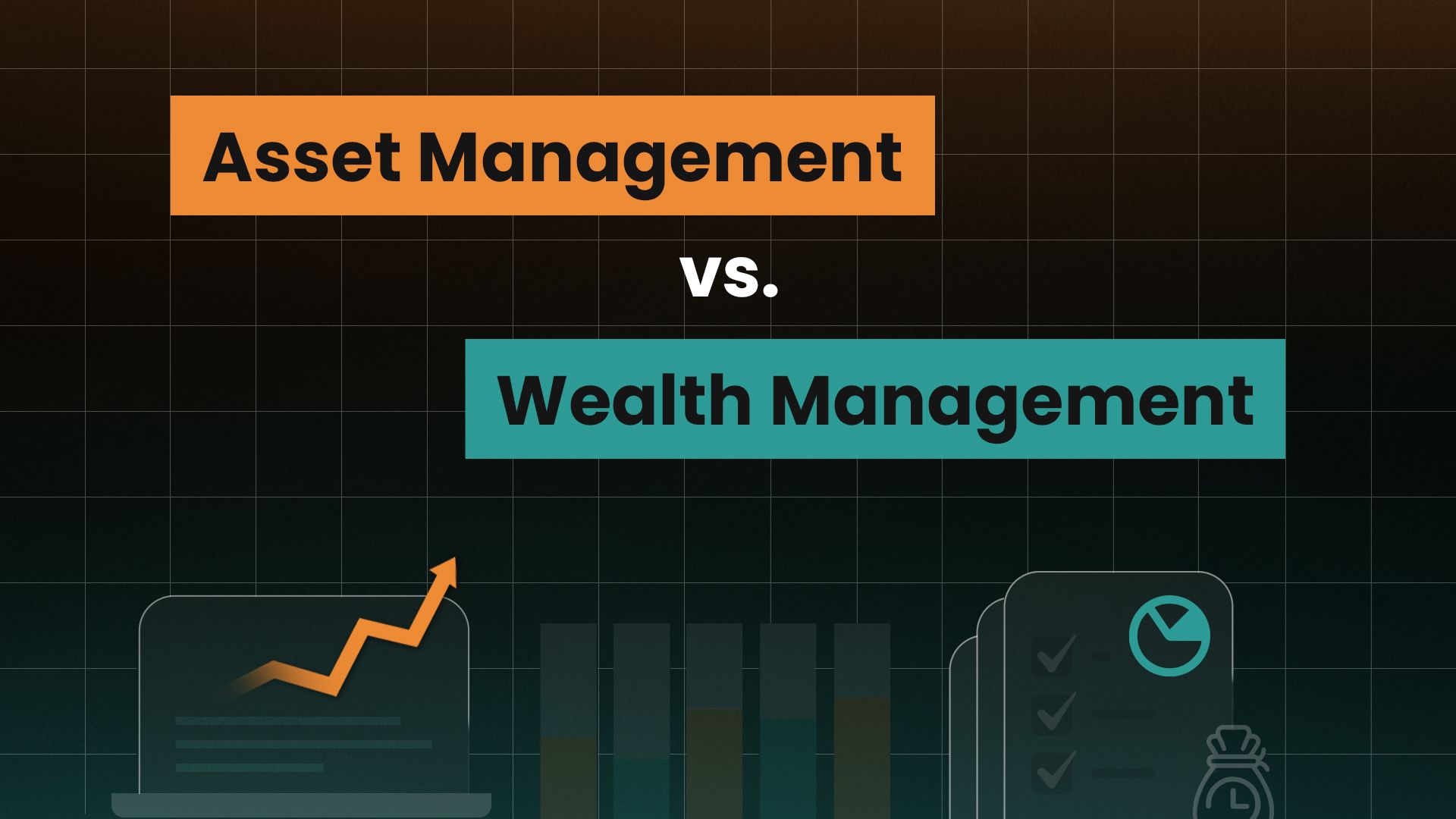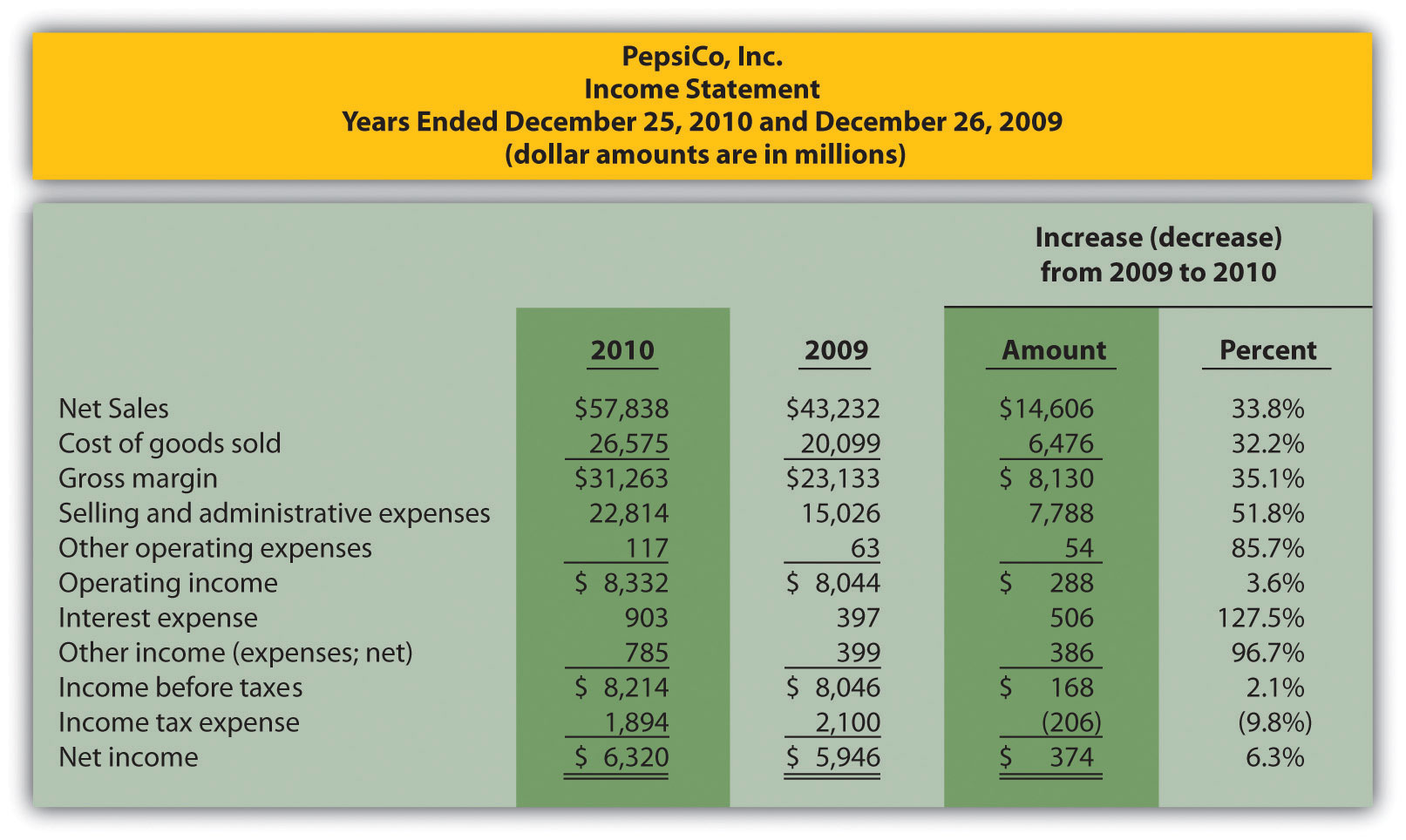

Finance
What Is Credit Management
Published: January 13, 2024
Discover the importance of credit management in finance. Learn how it impacts your financial stability and how to effectively manage your credit to achieve your financial goals.
(Many of the links in this article redirect to a specific reviewed product. Your purchase of these products through affiliate links helps to generate commission for LiveWell, at no extra cost. Learn more)
Table of Contents
- Introduction
- Definition of Credit Management
- Importance of Credit Management
- Components of Credit Management
- Role of Credit Management in Financial Institutions
- Credit Management Process
- Credit Evaluation and Approval
- Credit Limit Determination
- Credit Monitoring and Control
- Collection and Recovery
- Credit Management Strategies
- Benefits of Effective Credit Management
- Challenges in Credit Management
- Conclusion
Introduction
When it comes to managing finances, credit plays a crucial role in both personal and business settings. Credit management is the practice of overseeing and controlling the credit granted to individuals, organizations, or even countries. It involves assessing creditworthiness, setting credit limits, monitoring payment patterns, and initiating collection processes when necessary.
Effective credit management is essential for maintaining financial stability and ensuring the smooth functioning of the economy. It enables businesses and individuals to access funding, make purchases, and expand their operations. Moreover, it helps financial institutions evaluate and mitigate the risks associated with lending money.
In this article, we will delve into the world of credit management, exploring its definition, importance, components, and strategies. We will also discuss the role of credit management in financial institutions and the challenges it presents.
So, whether you are a business owner wanting to improve your cash flow, a lender evaluating credit applications, or an individual seeking to manage your personal finances better, understanding credit management is essential. Let’s dive in.
Definition of Credit Management
Credit management refers to the process of overseeing and controlling the credit granted to individuals, businesses, or other entities. It involves assessing the creditworthiness of applicants, determining appropriate credit limits, monitoring payment patterns, and managing the collection and recovery of debts.
In simpler terms, credit management is the practice of evaluating, granting, and managing credit to mitigate the risk of non-payment and financial losses. It is a vital aspect of financial management for both lenders and borrowers.
For lenders, credit management helps them assess the creditworthiness of potential borrowers and determine the amount of credit they can safely extend. By analyzing the borrower’s financial history, payment patterns, and overall creditworthiness, lenders can make informed decisions and reduce the risk of default.
For borrowers, effective credit management allows them to access funds, make purchases, and manage their cash flow efficiently. By maintaining a good credit history and managing their debts responsibly, individuals and businesses can improve their borrowing potential and negotiate better terms.
Credit management also involves establishing credit policies and procedures that outline the criteria for credit evaluation, credit limits, monitoring, and collection processes. These policies help maintain consistency and transparency in the credit management process.
In summary, credit management is a multi-faceted process that involves evaluating creditworthiness, setting credit limits, monitoring payment patterns, and managing debt collection. It aims to minimize the risk of non-payment and maximize the efficiency of credit utilization for both lenders and borrowers.
Importance of Credit Management
Credit management plays a crucial role in ensuring the financial stability and success of both individuals and businesses. Here are some key reasons why credit management is important:
- Minimizing Risk: Effective credit management helps mitigate the risk of non-payment and financial losses. By assessing the creditworthiness of borrowers, setting appropriate credit limits, and monitoring payment patterns, lenders can minimize the chances of default.
- Ensuring Cash Flow: For businesses, proper credit management ensures a steady cash flow. By promptly collecting payments and managing customer credit, businesses can avoid cash flow disruptions and maintain operations smoothly.
- Access to Funding: Credit management enables individuals and businesses to access funding and credit facilities when needed. Maintaining a good credit history and managing debts responsibly improves borrowing potential and opens doors to better loan terms and financial opportunities.
- Building Trust and Relationships: Good credit management fosters trust and stronger relationships with customers, suppliers, and lenders. By providing timely payments and fulfilling credit obligations, businesses can establish a positive reputation and gain the confidence of their stakeholders.
- Improving Financial Decision-Making: Credit management provides valuable insights into the financial health and stability of individuals and businesses. It allows lenders and borrowers to make informed decisions regarding credit utilization, investment opportunities, and financial planning.
- Optimizing Profitability: Effective credit management helps maximize profitability for businesses. By reducing bad debts, minimizing the cost of credit, and improving cash inflows, companies can enhance their bottom line and achieve greater financial success.
In summary, credit management is important because it minimizes financial risks, ensures a steady cash flow, provides access to funding, builds trust, improves decision-making, and optimizes profitability. Whether it’s for individuals seeking loans or businesses extending credit to customers, effective credit management is a fundamental aspect of financial stability and success.
Components of Credit Management
Credit management involves several key components that work together to ensure effective handling of credit. These components encompass various stages of the credit lifecycle. Let’s explore the essential components of credit management:
- Credit Evaluation: The process of credit evaluation involves assessing the creditworthiness of individuals or businesses applying for credit. It includes analyzing factors such as financial history, income, debt obligations, and payment patterns. Through this assessment, lenders can gauge the applicant’s ability to repay the credit.
- Credit Limit Determination: Once the creditworthiness evaluation is complete, the next component involves setting an appropriate credit limit. This limit represents the maximum amount of credit that can be extended to the borrower. It considers factors such as the borrower’s income, existing debts, and credit history.
- Credit Monitoring: Credit monitoring is a vital component that involves tracking and analyzing the payment patterns of borrowers. It aims to ensure that borrowers meet their repayment obligations on time. Lenders monitor credit accounts to identify potential risks, such as late payments or defaults, and take necessary actions to mitigate them.
- Credit Control: Credit control involves establishing policies and procedures to effectively manage and control credit. It includes implementing credit terms, setting credit terms and conditions, and enforcing credit policies. These measures help maintain consistency and fairness in credit management practices.
- Collection and Recovery: Collection and recovery are crucial components in credit management. These involve initiating collection actions when a borrower fails to make timely payments. This includes issuing reminders, contacting the borrower for payment, and, if necessary, implementing more formal debt recovery methods to recover outstanding amounts.
These components form the core of credit management, guiding the process from evaluating creditworthiness to collecting overdue payments. By effectively managing these components, lenders can minimize risk, maintain healthy cash flow, and ensure prompt payments, while borrowers can access credit, fulfill obligations, and maintain a good credit standing.
Role of Credit Management in Financial Institutions
Credit management plays a vital role in the operations of financial institutions, serving as a risk management tool and a key factor in their profitability. Let’s explore the significant roles that credit management plays in financial institutions:
- Risk Mitigation: One of the primary roles of credit management is to mitigate risks associated with lending. Financial institutions carefully evaluate the creditworthiness of borrowers, analyze their financial history, and determine credit limits accordingly. By assessing risk factors and implementing robust credit management practices, institutions can reduce the risk of defaults and financial losses.
- Profitability: Effective credit management contributes to the profitability of financial institutions. By managing credit risks, institutions can allocate capital efficiently and optimize the return on their lending activities. Additionally, employing strategies such as interest rate setting, loan structuring, and credit pricing helps generate revenue and improve overall profitability.
- Compliance: Credit management in financial institutions ensures compliance with regulations and industry standards. Institutions must adhere to guidelines and laws governing lending practices, risk management, and consumer protection. Proper credit management processes help institutions meet these obligations and maintain regulatory compliance.
- Customer Relationship Management: Credit management fosters strong customer relationships in financial institutions. By providing fair and transparent lending practices, institutions build trust with borrowers. They offer personalized credit solutions, flexible repayment options, and timely assistance to maintain positive customer relationships, resulting in customer loyalty and repeat business.
- Asset Quality: Effective credit management helps maintain a high-quality loan portfolio. Institutions actively monitor loan repayment patterns, identify potential credit risks, and take early actions to prevent delinquencies and defaults. By maintaining a portfolio of high-quality assets, institutions enhance their financial stability and minimize the impact of non-performing loans.
- Capital Adequacy: Credit management ensures the proper allocation and utilization of capital in financial institutions. By assessing credit risks and setting appropriate credit limits, institutions can effectively manage their capital resources. This helps maintain capital adequacy ratios as required by regulatory bodies and supports the long-term stability and sustainability of the institution.
In summary, credit management in financial institutions is crucial for mitigating risks, ensuring profitability, maintaining compliance, managing customer relationships, preserving asset quality, and optimizing capital allocation. By implementing effective credit management strategies, financial institutions can achieve operational efficiency, stability, and long-term success in the competitive financial landscape.
Credit Management Process
The credit management process encompasses the series of steps and activities involved in evaluating, granting, monitoring, and managing credit. This process ensures the effective handling of credit and minimizes the risk of non-payment. Let’s take a closer look at the key steps involved:
- Credit Evaluation and Approval: The process begins with evaluating the creditworthiness of potential borrowers. This involves assessing financial history, income, debt obligations, and payment patterns. Based on this evaluation, the credit application is either approved or declined.
- Credit Limit Determination: After evaluating creditworthiness, the next step involves setting an appropriate credit limit for the borrower. This limit is based on factors such as income, existing debts, and credit history. It represents the maximum amount of credit that can be extended to the borrower.
- Credit Monitoring and Control: Once credit is granted, it is essential to monitor and control the borrower’s credit activity. This involves tracking payment patterns, ensuring timely repayments, and identifying any potential risks. Regular monitoring helps identify early signs of delinquency and allows for corrective actions to be taken.
- Collection and Recovery: In situations where borrowers do not meet their payment obligations, the collection and recovery phase comes into play. This involves initiating collection procedures, contacting the borrower for payment, and, if necessary, employing legal means to recover outstanding debts.
- Credit Reporting: Throughout the credit management process, maintaining accurate and up-to-date credit reports is crucial. Credit reports provide a comprehensive overview of an individual or business’s credit history, including credit accounts, payment history, and outstanding debts. These reports help assess creditworthiness and support decision-making.
- Periodic Credit Reviews: Regular credit reviews are conducted to reassess the creditworthiness of borrowers. This involves analyzing updated financial information, reviewing payment patterns, and adjusting credit limits as necessary. Periodic credit reviews help ensure that the credit granted aligns with the borrower’s current financial status.
The credit management process is not a one-time event but rather a continuous cycle. It requires careful evaluation, monitoring, and adjustment to ensure that credit remains manageable and risks are mitigated effectively.
By following a systematic credit management process, lenders can minimize the risk of non-payment, maintain healthy cash flow, and optimize profitability, while borrowers can access funds, fulfill their credit obligations, and build a positive credit history.
Credit Evaluation and Approval
The credit evaluation and approval process is a critical step in credit management. It involves assessing the creditworthiness of potential borrowers and determining whether to grant credit. Let’s explore the key aspects of this process:
The first step in credit evaluation is gathering relevant information about the borrower. This includes reviewing the borrower’s financial history, income sources, existing debt obligations, and payment patterns. Lenders may request documents such as bank statements, tax returns, and credit reports to assess the applicant’s creditworthiness.
Next, lenders analyze the collected information to evaluate the borrower’s ability to repay the credit. Factors such as income stability, debt-to-income ratio, employment history, and credit score are taken into consideration. This analysis helps lenders assess the level of risk associated with extending credit to the applicant.
Based on the assessment, lenders make a decision regarding the credit application. This decision may result in granting credit, rejecting the application, or offering a modified credit arrangement. The credit limit is also determined during this stage, representing the maximum amount of credit that will be extended to the borrower.
During the credit evaluation and approval process, lenders also establish the terms and conditions of the credit arrangement. This includes determining the interest rate, repayment period, and any associated fees. The terms are tailored to the borrower’s financial situation and the level of risk identified during the evaluation process.
It is important to note that the credit evaluation and approval process varies depending on the type of credit and the institution’s policies. For larger credit applications, such as business loans, the process may involve more in-depth analysis, including a review of business plans, financial projections, and collateral.
Furthermore, the credit evaluation process may involve automated systems and credit scoring models that help lenders streamline the process and assess creditworthiness efficiently. These models use algorithms and historical data to predict the likelihood of repayment based on various factors.
Overall, the credit evaluation and approval process is crucial for lenders to make informed decisions about extending credit. It allows them to evaluate an applicant’s creditworthiness, determine suitable credit limits, and establish fair terms and conditions. By carefully analyzing the financial information and assessing risk, lenders can minimize the chances of default and ensure responsible lending practices.
Credit Limit Determination
Credit limit determination is a critical step in the credit management process. It involves setting an appropriate maximum amount of credit that will be extended to a borrower. Let’s explore the key factors considered in determining credit limits:
1. Financial Stability: Lenders assess the borrower’s financial stability to determine an appropriate credit limit. This includes evaluating factors such as income stability, employment history, and overall financial health. A borrower with a stable income and a strong financial position may be eligible for a higher credit limit compared to someone with a less secure financial situation.
2. Debt-to-Income Ratio: Lenders consider the borrower’s debt-to-income ratio, which is the percentage of monthly income dedicated to debt payments. A lower debt-to-income ratio indicates that the borrower has a higher capacity to manage additional credit and may qualify for a higher credit limit. Lenders aim to ensure that the borrower’s total debt obligations do not exceed a certain threshold.
3. Credit History: The borrower’s credit history plays a vital role in determining the credit limit. Lenders review the borrower’s credit report, which includes information about their past credit accounts, payment history, and outstanding debts. A positive credit history, with a track record of timely payments and a low level of debt, can increase the chances of obtaining a higher credit limit.
4. Purpose of Credit: The purpose for which the credit is being extended can also impact the credit limit. For example, a borrower seeking a business loan to expand their operations may be eligible for a higher credit limit compared to an individual seeking a personal loan for discretionary expenses.
5. Credit Utilization: Lenders consider the borrower’s existing credit utilization, which is the percentage of the available credit that is being utilized. Lower credit utilization indicates responsible credit management and may result in a higher credit limit, while high credit utilization may warrant a lower credit limit to mitigate the risk of overextension.
6. Risk Assessment: Lenders assess the overall risk associated with extending credit to a particular borrower. This includes evaluating the borrower’s creditworthiness, industry or sector risks (in the case of business loans), and market conditions. Higher-risk borrowers may be granted a lower credit limit to manage the risk exposure effectively.
It is worth noting that the credit limit determination process may vary based on individual lenders, their risk appetite, and the type of credit being extended. Larger credit applications, such as business loans, may involve a more extensive evaluation process, considering factors such as collateral and business assets.
Ultimately, the goal of credit limit determination is to strike a balance between meeting the borrower’s credit needs and managing the lender’s risk exposure. By considering various factors such as financial stability, debt-to-income ratio, credit history, and purpose of credit, lenders can determine an appropriate credit limit that aligns with the borrower’s financial capacity and mitigates the risk of default.
Credit Monitoring and Control
Credit monitoring and control are vital components of credit management. These processes involve tracking and managing the credit extended to borrowers to ensure timely repayments and minimize the risk of delinquencies or defaults. Let’s explore the key aspects of credit monitoring and control:
Credit Monitoring: Credit monitoring involves regularly tracking and reviewing the borrower’s credit activity. This includes monitoring their payment patterns, credit utilization, and any changes in their financial stability. Lenders use various tools and systems to stay updated on the borrower’s credit performance and identify any potential risks or red flags.
Payment Tracking: Keeping a close eye on the borrower’s payment behavior is crucial. Lenders monitor whether payments are made on time or if there are any delays or missed payments. Timely payment tracking helps identify potential delinquencies early on so that appropriate actions can be taken to rectify the situation.
Alert Systems: Many financial institutions use automated alert systems to notify them of any irregularities in credit accounts. These alerts can include missed payments, late payments, or exceeded credit limits. Prompt alerts enable lenders to address issues promptly and maintain control over the credit extended.
Reviewing Credit Reports: Regularly reviewing the borrower’s credit reports is essential for credit monitoring and control. Lenders analyze credit reports to gain insights into the borrower’s overall creditworthiness, outstanding debts, and payment history. Any significant changes in the borrower’s credit behavior can indicate potential risks that require further attention.
Adjusting Credit Limits: Credit monitoring may involve periodically assessing the borrower’s creditworthiness and adjusting credit limits accordingly. If the borrower’s financial situation has improved, lenders may consider increasing the credit limit. Conversely, if there are signs of financial strain or increased risk, lenders may opt to decrease the credit limit to manage exposure.
Establishing Credit Terms: Credit control involves establishing credit terms and conditions upfront. This includes defining the repayment period, interest rates, and any associated fees. Clear and transparent credit terms help set expectations and maintain control over the credit arrangement.
Implementing Collection Procedures: In situations where borrowers fail to meet their payment obligations, collection procedures are initiated. Lenders have established protocols for contacting delinquent borrowers, issuing reminders, and taking appropriate actions to recover outstanding debts. Proactive collection management helps mitigate losses and maintain control over credit arrangements.
By implementing effective credit monitoring and control measures, lenders can identify early warning signs of delinquency, take necessary actions to rectify the situation, and minimize the risk of default. It allows lenders to maintain control over credit extended, ensure timely repayments, and actively manage risks associated with lending.
For borrowers, credit monitoring and control serve as a reminder to fulfill their payment obligations on time, maintain a good credit standing, and foster a positive relationship with lenders. It also provides an opportunity to address any potential issues promptly to avoid more severe financial consequences.
Collection and Recovery
Collection and recovery are crucial components of credit management. In situations where borrowers fail to meet their payment obligations, the collection and recovery process comes into play. Let’s explore the key aspects of collection and recovery:
Issuing Reminders and Communication: The collection process typically begins with friendly reminders to borrowers about their outstanding payments. Lenders may send notices, emails, or make phone calls to communicate with the borrower and inform them of their overdue payment.
Creating Payment Plans: In some cases, borrowers may face temporary financial difficulties. Lenders can work with borrowers to establish payment plans that allow them to repay their debts in manageable installments. This helps facilitate repayment and avoids more drastic collection measures.
Escalating Collection Efforts: If reminders and payment plans do not result in payment, lenders escalate their collection efforts. This can involve more assertive communication, involving third-party collection agencies, or taking legal action to recover the outstanding debts.
Collateral and Asset Recovery: In cases where loans are secured by collateral, such as property or vehicles, lenders may take steps to repossess and recover the assets to offset the outstanding debt. Collateral recovery is an important aspect of the collection and recovery process for loans backed by tangible assets.
Legal Action: As a last resort, lenders may initiate legal proceedings to recover outstanding debts. This can involve filing a lawsuit, obtaining judgments, and using legal mechanisms to collect the owed amount. Legal action is typically taken when all other collection efforts have been exhausted.
Debt Settlement: In certain situations, lenders may consider debt settlement options if recovery becomes challenging or uncertain. Debt settlement involves negotiating with the borrower to accept a reduced payment in full satisfaction of the debt. While this may result in a loss for the lender, it allows them to resolve the debt and move forward.
Recovery Management: Throughout the collection and recovery process, lenders must prioritize efficient recovery management. This involves maintaining accurate records of communication, tracking progress, and taking appropriate actions to recover debts effectively while ensuring compliance with legal requirements and regulations.
The collection and recovery process can vary depending on the terms of the credit arrangement, the amount of debt owed, and the jurisdiction’s legal framework. It is vital for lenders to follow ethical collection practices, treat borrowers with respect, and adhere to applicable laws to ensure fair and responsible debt collection.
For borrowers, it is important to address outstanding debts promptly and work with lenders to find mutually agreeable solutions. Engaging in open communication and cooperating with lenders can help mitigate the negative consequences of delinquency and support the recovery process.
Overall, the collection and recovery process is a critical aspect of credit management, allowing lenders to retrieve outstanding debts and manage their credit portfolio effectively.
Credit Management Strategies
Credit management strategies are essential for mitigating risks, optimizing cash flow, and maintaining healthy credit portfolios. These strategies involve proactive measures to ensure timely payments, minimize defaults, and improve overall credit performance. Let’s explore some common credit management strategies:
- Effective Credit Policies: Establishing clear and well-defined credit policies is crucial. These policies outline the criteria for credit evaluation, credit limits, and terms of repayment. By having robust policies in place, lenders can maintain consistency and transparency in their credit management practices.
- Credit Scoring: Utilizing credit scoring models helps lenders assess creditworthiness efficiently. These models use algorithmic calculations based on historical data to predict the likelihood of repayment. Credit scoring enables quick and accurate decision-making in credit evaluation and helps streamline the overall credit management process.
- Regular Credit Reviews: Conducting periodic credit reviews allows lenders to reassess the borrower’s creditworthiness and adjust credit limits as necessary. This helps ensure that the credit extended remains appropriate and aligned with the borrower’s current financial situation.
- Building Strong Relationships: Nurturing positive relationships with customers is vital. Lenders should maintain open lines of communication, provide exceptional customer service, and offer flexible repayment options. Building trust and rapport with borrowers fosters a sense of responsibility and increases the likelihood of timely repayments.
- Effective Credit Monitoring: Implementing robust credit monitoring systems allows lenders to track payment patterns and identify potential delinquencies early on. Timely intervention can prevent delinquencies from escalating into severe defaults and enable lenders to take necessary actions to rectify the situation.
- Consistent Collections Process: Having a well-defined and consistent collections process is crucial for effectively managing outstanding debts. Lenders should establish protocols for communication, issuing reminders, and escalating collection efforts when necessary. A systematic and fair collections process helps recover outstanding amounts and minimize losses.
- Training and Skill Development: Providing training and skill development opportunities for credit management staff is essential. This ensures they have a deep understanding of credit analysis, risk assessment, and collection techniques. Well-trained staff can make informed decisions, effectively manage credit portfolios, and handle collection processes with professionalism.
- Utilizing Technology: Leveraging technology is key to efficient credit management. Automated systems can streamline credit evaluation, credit monitoring, and collections processes. This helps improve accuracy, reduce manual errors, and enhance the overall effectiveness of credit management strategies.
It’s important to note that credit management strategies should be tailored to the specific needs and requirements of the lender and the borrower. Different industries and sectors may also have unique considerations in credit management. Adapting strategies to the changing economic landscape and regulatory environment is necessary to maintain effective credit management practices.
Implementing these credit management strategies can help lenders minimize risks, ensure healthier credit portfolios, and optimize cash flow. For borrowers, understanding and aligning with these strategies can facilitate responsible credit usage and enhance their creditworthiness.
Benefits of Effective Credit Management
Effective credit management offers numerous benefits for both lenders and borrowers. By implementing sound credit management practices, individuals and businesses can maintain financial stability, optimize cash flow, and enhance their overall financial well-being. Let’s explore some key benefits of effective credit management:
- Risk Reduction: The primary benefit of credit management is the reduction of risks associated with lending. By carefully evaluating creditworthiness, setting appropriate credit limits, and monitoring payment patterns, lenders can mitigate the risk of defaults and non-payment. This leads to a healthier loan portfolio and minimizes the financial impact of bad debts.
- Cash Flow Optimization: Effective credit management ensures a steady cash flow for both lenders and borrowers. Lenders receive timely repayments, enabling them to meet their financial obligations and maintain liquidity. For borrowers, credit management facilitates manageable repayment schedules, preventing cash flow constraints and supporting their day-to-day operations or personal financial commitments.
- Access to Funding: Demonstrating responsible credit management improves a borrower’s creditworthiness and increases their access to funding. Lenders are more willing to extend credit to borrowers with a positive credit history and a track record of timely payments. This access to funding can support business growth, investment opportunities, or personal financial goals.
- Better Borrowing Terms: Effective credit management allows borrowers to negotiate better borrowing terms. A good credit history, low credit utilization, and demonstrated financial responsibility can lead to lower interest rates, favorable repayment terms, and higher credit limits. These improved borrowing terms translate into cost savings and financial flexibility for borrowers.
- Financial Planning and Decision-Making: With effective credit management, borrowers can make informed financial decisions and engage in strategic financial planning. A clear understanding of credit obligations, payment schedules, and budgeting helps individuals and businesses allocate resources effectively, anticipate cash flow requirements, and minimize financial uncertainties.
- Enhanced Creditworthiness: Consistently practicing effective credit management leads to an enhancement in creditworthiness over time. Responsible credit behavior, such as making timely payments and keeping credit utilization low, improves credit scores and increases the chances of obtaining credit in the future. This enhanced creditworthiness opens doors to better financing opportunities and more favorable terms.
- Positive Relationships: Effective credit management fosters positive relationships between lenders and borrowers. By meeting payment obligations on time, borrowers establish trust and reliability with lenders, which can lead to beneficial relationships, preferential treatment, and future credit opportunities. Strong lender-borrower relationships are built on mutual respect, communication, and shared commitment to responsible credit management.
In summary, effective credit management offers a range of benefits, including risk reduction, optimized cash flow, increased access to funding, better borrowing terms, improved financial planning, enhanced creditworthiness, and positive relationships. Implementing sound credit management practices sets the stage for financial success and stability for both lenders and borrowers.
Challenges in Credit Management
While credit management is crucial for financial stability and success, it also comes with its fair share of challenges. Understanding and addressing these challenges is important for lenders and borrowers to navigate the credit landscape effectively. Let’s explore some common challenges in credit management:
- Assessing Creditworthiness: Accurately evaluating the creditworthiness of borrowers is a challenge. It requires a comprehensive analysis of financial history, income stability, and other factors that influence creditworthiness. Obtaining accurate and up-to-date information can be difficult, especially for new or non-traditional borrowers.
- Risk Management: Managing credit risks poses a challenge for lenders. Balancing the need to extend credit to support borrowers’ needs while mitigating the risk of default can be a delicate task. Assessing and monitoring credit risks effectively requires sophisticated risk management tools and continuous evaluation of changing economic and market conditions.
- Debt Collection: Recovering outstanding debts can be a significant challenge in credit management. Collecting payments from delinquent borrowers requires navigating legal frameworks, maintaining compliance with debt collection regulations, and employing effective collection strategies. Challenges may arise when borrowers are unresponsive, financially distressed, or facing legal constraints.
- Changes in Financial Circumstances: Financial circumstances can change unexpectedly, both for borrowers and lenders. Economic downturns, market fluctuations, personal hardships, or business challenges can impact the ability to meet credit obligations. Adapting credit management strategies to account for such changes and finding mutually beneficial solutions can be a challenge.
- Regulatory Compliance: Adhering to various regulatory requirements related to credit management presents a challenge. Lenders must navigate complex regulations to ensure compliance with laws governing lending practices, data privacy, consumer protection, and fair debt collection. Staying updated with changing regulations and implementing necessary measures can be demanding.
- Technology and Automation: While technology can enhance credit management processes, implementing and utilizing technology effectively can be a challenge. Integrating new systems, training staff, and leveraging automation to streamline credit evaluation, monitoring, and collection require careful planning and ongoing investment in resources.
- Managing Customer Relationships: Building and maintaining positive customer relationships can pose challenges. Striking the right balance between ensuring timely repayments and maintaining good rapport with borrowers requires effective communication, empathy, and understanding. Handling difficult situations and resolving conflicts while maintaining professionalism requires skill and emotional intelligence.
- Fraud and Identity Theft: Credit management can be impacted by the rising threat of fraud and identity theft. Verifying applicant identities and protecting sensitive customer information are constant challenges. Implementing robust security measures and staying vigilant against fraudulent activities are crucial to protecting both lenders and borrowers.
Overcoming these challenges requires a proactive approach, continuous learning, and adaptation in credit management practices. Lenders and borrowers must stay informed, embrace technology and automation, foster open communication, and maintain a solid understanding of regulatory requirements.
By recognizing and addressing these challenges, stakeholders in the credit management process can work towards more efficient, secure, and mutually beneficial credit arrangements.
Conclusion
Credit management is a critical aspect of personal and business finance, providing the foundation for financial stability and success. By understanding and implementing effective credit management practices, both lenders and borrowers can navigate the intricacies of credit, minimize risks, and optimize financial outcomes.
We explored various aspects of credit management in this article, including its definition, importance, and components. We discussed how credit management plays a significant role in financial institutions, enabling risk mitigation, profitability, and compliance. Additionally, we examined the credit management process, encompassing credit evaluation and approval, credit limit determination, credit monitoring and control, collection and recovery, and the importance of credit reporting and periodic reviews.
Furthermore, we explored the benefits of effective credit management, such as risk reduction, access to funding, improved cash flow, and enhanced borrowing terms. We also acknowledged the challenges that both lenders and borrowers face in credit management, ranging from assessing creditworthiness and managing risk to debt collection and regulatory compliance.
In conclusion, effective credit management is a fundamental pillar of financial success. It allows lenders to mitigate risks, maintain healthy loan portfolios, and optimize profitability. For borrowers, effective credit management facilitates access to funding, supports cash flow, and enhances creditworthiness.
By embracing sound credit management strategies, such as establishing credit policies, utilizing credit scoring models, implementing effective credit monitoring, and fostering strong customer relationships, stakeholders in the credit management process can navigate the challenges and reap the benefits.
Ultimately, responsible credit management is the key to maintaining financial stability, supporting growth and prosperity, and fostering mutually beneficial relationships between lenders and borrowers.














